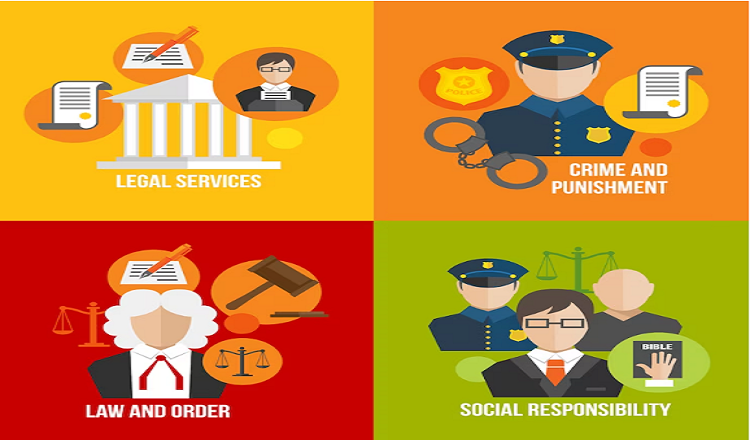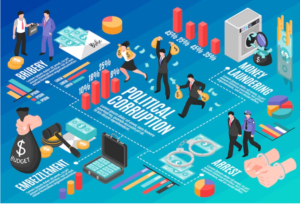The role of law enforcement in reducing crime rates

Have you had enough of crime dramas on TV? We all love a good show of Law & Order, but crime in the U.S. is nothing like what we see on TV. Americans still worry a lot about crime rates, and many people feel unsafe in their neighbourhoods. This is where law enforcement comes in. They are very important in lowering crime rates and making our neighbourhoods safer.
In this piece, we’ll talk about how important it is for law enforcement to help lower crime rates in the United States. First, we’ll talk about how bad crime is in the country right now. Then, we’ll talk about what law enforcement is and the different groups that do it. From there, we’ll look at how law enforcement can change crime rates, focusing on successful programmes and tactics that have already been used. But it’s not all sunshine and roses. We’ll also talk about the difficulties law enforcement faces in lowering crime rates, as well as some of the problems with the way they do things. By the end of this piece, you’ll have a better idea of how important law enforcement is to keeping our communities safe. So sit back, take a deep breath, and let’s dive into the world of fighting crime and doing the right thing.
How bad crime is in the US right now
In the past few years, many Americans have been worried about the high crime rates in the United States. The FBI’s Uniform Crime Reporting Programme says that the number of serious crimes went up in 2020 compared to the year before. This includes more murders, more serious assaults, and more gun crime. But the number of crimes against property went down during the same time frame.
Some experts say that the COVID-19 pandemic, economic instability, and social unrest are all to blame for the rise in violent crime. There have also been clear patterns and trends in crime rates based on demographics, with more crime happening in some places and among some groups. Understanding these patterns and trends is important for coming up with effective plans to lower crime rates and make the public safer.
How do you keep the law?
When we say “law enforcement” in the United States, we mean the different groups and agencies that keep the people safe and make sure the law is followed. This can include police, the FBI, the DEA, and the ATF, as well as state and local organisations.
Police departments are probably the most visible type of law enforcement. They react to calls for help, walk around neighbourhoods, and look into crimes. The Federal Bureau of Investigation (FBI) is a government body that looks into all kinds of crimes, including terrorism, cybercrime, and organised crime. The Drug Enforcement Administration (DEA) is in charge of enforcing laws and rules about drugs, while the Bureau of Alcohol, Tobacco, Firearms, and Explosives (ATF) is in charge of enforcing laws about guns and bombs.
Most of the time, these different groups work together to fight crime and keep the people safe. Understanding what each agency does is important for coming up with good plans to lower crime rates and make communities safer.
How law enforcement helps bring down crime rates
Law enforcement is very important to lowering crime rates in the United States. They do this in many ways. One important way is through deterrence, which means that the appearance of law enforcement can make people less likely to commit crimes. Another way is for law enforcement agencies to look into criminal behaviour and try to find and arrest the people who are responsible. Community policing, which includes building relationships and partnerships with people in the community, can also help stop crime by addressing social problems and building trust between police and the community.
Law enforcement departments all over the USA have used strategies and programmes that have worked well. Some of these are intelligence-led police and restorative justice programmes. Intelligence-led policing focuses on using data and analytics to find crime hotspots and send resources there. Restorative justice programmes try to fix the damage caused by crime and deal with underlying problems that may lead to crime. Law enforcement agencies can make big steps towards lowering crime rates and making communities safer by putting in place successful strategies and programmes.
Problems that law enforcement has to deal with in order to lower crime rates
Even though law enforcement is a key part of lowering crime rates in the US, they face a number of problems that can make it hard for them to do their jobs well. One of these problems is a lack of resources, like money, people, and tools, which can make it hard for law enforcement to examine crimes and stop others from happening. A lack of trust in the community can also be a big problem. Some people in the community may feel that law enforcement doesn’t care about their wants or concerns. Institutional biases can also be a problem. For example, some law enforcement practises and policies keep race or socioeconomic gaps in the criminal justice system.
These problems can make it hard for law enforcement to bring down crime rates, which could lead to higher crime rates, less safety in the community, and less trust in law enforcement. Addressing these problems is important if we want to come up with effective ways to lower crime rates and make communities safer. This could mean giving law enforcement more money and tools, promoting openness and accountability, and building trust and partnerships with people in the community.
Critiques of the way law enforcement tries to lower crime rates
The way US law enforcement tries to lower crime rates has been criticised a lot, especially in the last few years. Over-policing is one of the most common complaints. This means that there are too many police officers in some neighbourhoods, especially those with a lot of poor and people of different races. Another big worry is racial profiling, which is the practise of using race or culture as a factor in law enforcement. Also, the use of too much force by law enforcement is getting more attention, especially when it comes to helpless people or people in a mental health crisis.
These complaints bring up important questions about how well and fairly law enforcement is trying to cut down on crime. They also show that police practises need to be more accountable and open, and that police strategies and methods need to be looked at again. By addressing these criticisms and trying to improve the relationship between law enforcement and the community, it may be possible to come up with more effective ways to lower crime rates and improve public safety.
Conclusion
In the end, law enforcement is a very important part of lowering crime numbers in the US. Law enforcement organisations try to keep communities safe and secure by discouraging crime, investigating and prosecuting crimes, and working with the community. But they also face big problems, such as limited resources, biases in institutions, and criticism of how they try to lower crime rates.
To make law enforcement’s method to lowering crime rates better, it’s important to deal with these problems and work towards more accountability and openness. This can be done by giving law enforcement more money and resources, encouraging community participation and partnerships, and putting in place successful strategies and programmes that deal with underlying social problems and stop crime from happening in the first place. To build more trust and cooperation between law enforcement and the community, it is also important to recognise and address complaints of the way law enforcement works, such as over-policing, racial profiling, and the use of too much force.
Overall, you can’t say enough about how important law enforcement is for lowering crime rates. By working together to solve problems and put effective plans into place, law officers and communities can make the world a safer and more secure place for everyone.
Read More You May Like:








